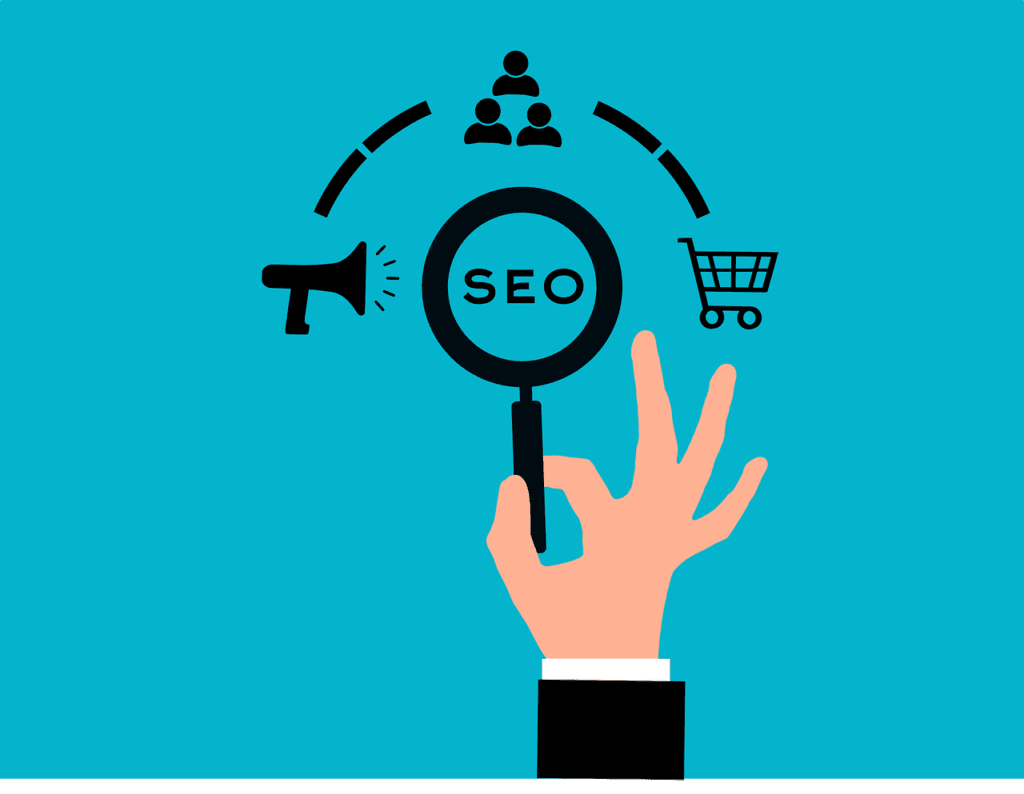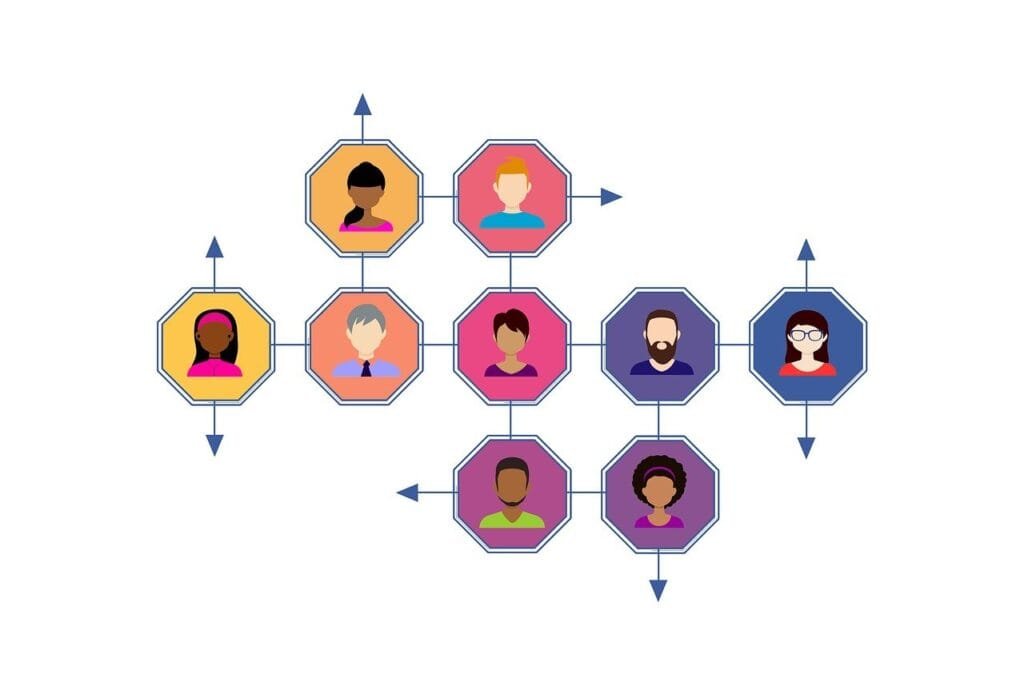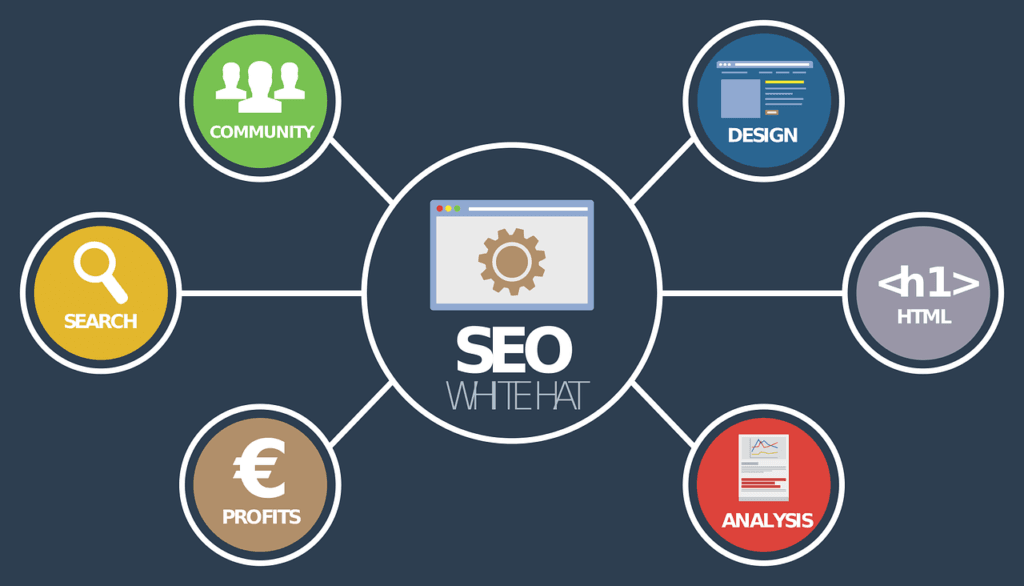This Article has been revised, edited and added to, by Poulomi Chakraborty.
- Related: Check out our free SEO suite
- Understand Your Audience's Desires:
- Maintain Clear Call-to-Action (CTA) Buttons:
- Optimize for Mobile Users:
- Implement A/B Testing:
- Use Social Proof Elements:
- Optimize for Search Engines (SEO):
- Create a Sense of Community:
- Conclusion
As a travel business, your landing page for such deals is the gateway to these dreams. It’s not just a webpage; it’s an invitation, a story, a promise of adventure.
The question is, how do you ensure this landing page isn’t just visually appealing but also optimized for conversions? Let’s find out.
Understand Your Audience’s Desires:

Before diving into design and content, you must grasp the aspirations, needs, and concerns of your target audience. Are they budget backpackers or luxury seekers? Do they prefer secluded getaways or bustling city breaks? Aligning your landing page to resonate with your audience’s desires will make your travel deals more compelling.
Craft a Captivating Headline:
Your headline is the first impression, the beacon that either draws travelers in or pushes them away. It should be clear, evocative, and hint at the adventure awaiting them. Think: “Escape to Bali: Unbeatable Deals Await!” rather than a generic “Travel Discounts.”
Use High-Quality Imagery:
A picture paints a thousand words, especially in the travel industry. Use striking, high-resolution images of the destinations your deal covers. Ensure these images evoke emotion, from the serenity of a beach sunset to the thrill of an urban exploration.
Deep Dive into Audience Segmentation
The Essence of Audience Segmentation
Understanding your audience’s desires goes beyond the surface level of identifying them as budget backpackers or luxury seekers. It involves a deep dive into the psychology of your potential customers, their travel motivations, and the specific pain points they face in the travel planning process. Segmenting your audience allows for a nuanced approach to targeting, where you can tailor your messaging and deals to resonate with specific groups.
Leveraging Data for Insightful Segmentation
To segment your audience effectively, leverage data from various sources such as website analytics, social media insights, and customer feedback surveys. This data provides invaluable insights into the behaviors, preferences, and engagement patterns of your audience. For instance, analytics can reveal which destinations are most searched for by your visitors, allowing you to offer deals that are more likely to convert.
Crafting Tailored Experiences
Understanding the Traveler’s Journey
The traveler’s journey from dreaming about a vacation to booking it is filled with moments of decision-making. Understanding this journey is crucial to crafting landing pages that convert. By analyzing the stages of this journey, you can identify key touchpoints where your landing page can influence their decision. This means recognizing when they are just looking for inspiration, comparing options, or ready to book.
Personalizing the User Experience
Once you have segmented your audience and understood their journey, the next step is personalization. Personalization in this context means more than just addressing the user by name. It involves tailoring the content of your landing pages to meet the expectations and desires of different segments. For example, if data shows a significant portion of your audience prefers eco-friendly travel options, highlighting sustainable travel deals can significantly increase engagement and conversions.
Implementing Dynamic Content
The Power of Dynamic Content
Dynamic content is content that changes based on the behavior, preferences, or past history of the visitor. Implementing dynamic content on your landing pages can drastically improve the personalization of the user experience. For instance, if a visitor has previously looked at family-friendly vacation deals, your landing page can dynamically display deals related to family vacations when they visit again.
Tools and Technologies for Dynamic Personalization
To implement dynamic content effectively, utilize tools and technologies designed for real-time personalization. These tools can help you automatically adjust the content, images, and offers on your landing pages based on the visitor’s profile, behavior, and engagement history. This not only enhances the user experience but also increases the likelihood of conversion by presenting the most relevant and appealing deals.
In the competitive landscape of travel deals, understanding your audience’s desires is not just about identifying broad categories of travelers. It involves a deep, data-driven understanding of their preferences, behaviors, and journey.
By segmenting your audience, crafting tailored experiences, and implementing dynamic content, you can create landing pages that resonate on a personal level, driving higher engagement and conversions. This strategic approach requires ongoing analysis and adaptation, but the rewards in customer satisfaction and conversion rates are well worth the effort.
Maintain Clear Call-to-Action (CTA) Buttons:

Whether it’s “Book Now,” “Discover More,” or “Grab the Deal,” your CTA buttons should stand out and guide the visitor towards conversion. Position them prominently, and consider using contrasting colors to make them pop.
Provide Detailed Yet Concise Information:
Travelers need specifics. Dates, inclusions, exclusions, pricing—provide all necessary details but in a concise manner. Utilize bullet points, infographics, or collapsible sections to avoid overwhelming the visitor.
Include Genuine Testimonials:
Trust is paramount in the travel industry. Incorporate testimonials from travelers who have availed of your deals in the past. Their experiences, preferably accompanied by their photos and names (with permission), add credibility to your offers and assure potential customers of the quality they can expect.
Maximizing Conversion Through Strategic CTA Placement
The Art of CTA Placement
The placement of Call-to-Action (CTA) buttons on your landing page can significantly impact user engagement and conversion rates. Strategic placement ensures that the CTAs are noticed at the right moment in the visitor’s journey, guiding them towards taking the desired action without feeling overwhelmed or coerced. It’s about finding the balance between visibility and subtlety, ensuring that the CTA buttons are both prominent and harmoniously integrated into the overall page design.
The Principle of Above the Fold
One of the timeless principles in web design and content strategy is the importance of placing key information “above the fold,” the part of the web page visible without scrolling. This principle is critical for CTA placement.
Ensuring that at least one clear, compelling CTA is visible immediately upon page load can drastically increase the likelihood of user engagement. However, this does not mean cluttering the initial view with multiple CTAs. Choose one primary action you want users to take and make it count.
Enhancing CTA Visibility Through Design
Leveraging Color Psychology
The color of your CTA buttons is not just a design choice; it’s a psychological one. Different colors evoke different emotions and actions from users. For example, a vibrant orange or green can convey energy and positivity, potentially increasing click-through rates.
However, the key is to ensure that the CTA button color contrasts well with the background and overall color scheme of the landing page, making it stand out while still feeling like a natural part of the page design.
The Power of White Space
White space, or negative space, is the area of the page that is left unmarked, such as the spaces between graphics, margins, and gutters. Far from being mere emptiness, strategic use of white space can highlight your CTA buttons, making them more prominent and visually appealing.
By reducing clutter around your CTAs, you draw the user’s attention directly to the action you want them to take, making the path to conversion clear and straightforward.
Crafting Compelling CTA Copy
The Psychology Behind Word Choice
The wording of your CTA buttons can dramatically affect their effectiveness. Each word should be chosen with the goal of inciting action while also conveying the benefit that clicking will provide the user.
Instead of generic phrases like “Click Here,” opt for action-oriented, benefit-focused copy such as “Get My Discount” or “Start My Adventure.” This not only tells users what action to take but also what they’ll gain from taking it, making the CTA more enticing.
Testing and Optimization
No single CTA design, placement, or copy will work best for every travel deal or audience. The most effective strategies involve continuous testing and optimization. A/B testing, or split testing, allows you to compare different versions of your CTAs to see which performs better.
Experiment with different placements, colors, and wording to find the combination that yields the highest conversion rates for your specific audience and offer.
In the journey to optimize landing pages for travel deals, the design, placement, and copy of your CTA buttons play pivotal roles. By applying strategic design principles, leveraging psychological insights, and committing to ongoing testing and optimization, you can significantly enhance the effectiveness of your CTAs.
This not only improves user engagement but also drives higher conversion rates, turning visitors into travelers ready to embark on their next adventure with your brand.
Optimize for Mobile Users:

In today’s digital age, a significant chunk of users accesses travel deals via smartphones. Ensure your landing page is mobile-responsive, offering a seamless experience across devices. Check load times, button sizes, and readability on mobile to ensure users don’t bounce off due to usability issues.
Highlight Scarcity or Time-Limited Offers:
Humans are wired to respond to urgency. If a deal is available for a limited time or has limited slots, clearly highlight this. Phrases like “Only 5 spots left!” or “Offer ends in 3 hours!” can drive quicker decision-making.
Ensure Transparent Pricing:
Nothing deters a potential traveler more than hidden costs. Clearly outline what’s included in the price and if there are any potential add-ons. Avoid surprises at the checkout stage; it’s a surefire way to lose trust and conversions.
Embracing Mobile-First Design
Prioritizing the Mobile Experience
In today’s digital landscape, a mobile-first approach is not just recommended; it’s essential. This means designing your landing page with the mobile user in mind from the outset, rather than simply adapting a desktop design to fit a smaller screen. This approach ensures that the core elements of your landing page, such as your value proposition and call-to-action (CTA) buttons, are immediately accessible and engaging for mobile users.
Streamlining Navigation for Touch
Considering the tactile nature of mobile devices, navigation should be intuitive and effortless. This involves optimizing touch targets such as buttons, links, and form fields to be easily tappable with a finger, without the risk of mis-clicks. Ensuring that these elements are of a sufficient size and spaced well apart is critical to providing a smooth mobile user experience.
Leveraging Mobile-Specific Features
Utilizing Device Capabilities
Mobile devices offer unique capabilities that can enhance the user experience and drive conversions. Features such as click-to-call buttons for instant phone calls, GPS for location-based offers, and the integration of mobile payment systems can make the journey from discovery to booking seamless for mobile users. Implementing these features thoughtfully can significantly elevate the user experience and encourage immediate action.
Accelerated Mobile Pages (AMP)
Accelerated Mobile Pages (AMP) is a web component framework designed to speed up the loading time of pages on mobile devices. By utilizing AMP for your landing pages, you can provide a fast, smooth, and engaging experience to mobile visitors. This is particularly important in the travel industry, where high-quality images and videos are essential but can often slow down page load times.
Ensuring Responsive and Adaptive Design
The Importance of Flexibility
A responsive design ensures that your landing page looks great and functions perfectly across all devices and screen sizes, from the smallest smartphone to the largest desktop monitor. However, going beyond responsive design, adaptive design tailors the layout and content to the specific characteristics of the device being used. This might mean different layouts or content emphasis on mobile versus desktop, optimizing the user’s experience based on their device.
Testing Across Devices and Platforms
With a myriad of mobile devices, screen sizes, and operating systems in use, thorough testing is crucial to ensure that your landing page performs well for every potential visitor. This involves not only automated testing tools but also real-user testing across different devices and platforms. Regularly updating your testing protocols to include the latest devices and OS versions will help maintain an optimal mobile experience.
Enhancing Mobile Page Speed
The Need for Speed
Page speed is a critical factor in user engagement and SEO, especially for mobile users who often access content on-the-go with varying levels of internet connectivity.
Optimizing images, leveraging browser caching, minifying CSS and JavaScript, and utilizing content delivery networks (CDNs) are all strategies that can significantly reduce loading times and improve the overall mobile experience.
Optimizing landing pages for mobile users is a multifaceted process that requires a strategic approach to design, functionality, and performance. By embracing a mobile-first design, leveraging mobile-specific features, ensuring responsive and adaptive layouts, and enhancing page speed, travel businesses can create landing pages that not only captivate but also convert the ever-growing segment of mobile users. In the competitive travel industry, providing an exceptional mobile experience is not just an advantage; it’s a necessity.
Implement A/B Testing:

Optimization is a continuous journey. Regularly test variations of your landing page – from CTA colors, positioning, headline phrasing, to imagery used. By understanding what resonates most with your audience, you can fine-tune for maximum conversions.
Embed Engaging Video Content:
Videos can transport viewers to the destination, offering a teaser of the experiences awaiting them. A well-produced video showcasing the highlights of a travel package can significantly increase engagement and conversion rates.
Establishing a Culture of Continuous Optimization
The Philosophy Behind A/B Testing
A/B testing, at its core, is not just a tactic but a philosophy of continuous improvement and data-driven decision-making. For startup founders, embedding this philosophy into your marketing strategy from the outset can set the foundation for growth and scalability.
It involves constantly questioning assumptions, challenging the status quo, and seeking out data to guide your decisions. This mindset encourages innovation and adaptability, qualities that are crucial in the dynamic travel industry.
Building a Structured Testing Framework
A/B testing should not be approached haphazardly but rather with a structured framework that ensures tests are both meaningful and actionable. This framework involves defining clear objectives for each test, hypothesizing the potential impact, selecting relevant metrics for measurement, and establishing a process for analyzing results and implementing learnings. Such a structured approach not only enhances the efficiency of your testing efforts but also ensures that you’re moving towards your strategic goals with every test conducted.
Delving into Advanced A/B Testing Strategies
Segment-Based Testing
While traditional A/B testing compares two or more versions of a page to see which performs better across your entire audience, segment-based testing takes this a step further by focusing on specific audience segments. This approach recognizes that different segments may respond differently to the same page variant. By tailoring tests to segments based on demographics, behavior, or source of traffic, you can uncover insights that are more nuanced and actionable, leading to higher conversion rates within each segment.
Testing Beyond the Landing Page
While the landing page is a critical component of your marketing funnel, A/B testing should not be confined to it. Extend your testing to other elements of the user journey, including email campaigns, ad creatives, and checkout processes. This holistic approach ensures that optimizations are made throughout the customer journey, providing a seamless and optimized experience from the first touchpoint to the final conversion.
Leveraging Technology for Insightful A/B Testing
Utilizing the Right Tools
The effectiveness of your A/B testing strategy is largely dependent on the tools you use. Leveraging advanced A/B testing platforms can provide deeper insights into user behavior, automate the testing process, and allow for more complex test setups. These tools can track a wide range of metrics, from click-through rates to conversion rates, and even post-conversion metrics like customer satisfaction and retention rates.
Integrating with Analytics
For A/B testing to be truly impactful, it must be integrated with your analytics platform. This integration allows for a deeper analysis of test results, going beyond surface-level metrics to understand the reasons behind user behavior. Analyzing session recordings, heatmaps, and user journeys in conjunction with A/B test results can provide a comprehensive view of how changes affect user experience and behavior.
Implementing A/B testing as a fundamental part of your strategy for optimizing landing pages for travel deals is not just about incremental improvements but about fostering a culture of innovation and data-driven decision-making.
By embracing advanced strategies, leveraging technology, and adopting a holistic view of the customer journey, startup founders can ensure that their travel deals resonate with their target audience, driving conversions and fostering growth.
Continuous testing and optimization become not just a tactic but a cornerstone of your marketing strategy, guiding your travel business towards success in a competitive landscape.

Related: Check out our free SEO suite

Use Social Proof Elements:
Aside from testimonials, showcasing other elements of social proof can be compelling. Consider adding a live counter of how many people have booked the deal or are currently viewing it, or badges from travel review sites indicating high ratings.
Implement Live Chat Support:
Travel plans often come with queries. By providing a live chat feature, you offer immediate assistance, addressing doubts or concerns in real-time and nudging visitors closer to booking.
Ensure Fast Loading Speeds:
Online users are increasingly impatient. Ensure your landing page loads swiftly, as even a few seconds’ delay can lead to potential customers abandoning the page. Optimize images, reduce unnecessary scripts, and consider using a Content Delivery Network (CDN) to speed up load times.
Amplifying Credibility Through Social Proof
Crafting a Narrative with Testimonials
Social proof is not just about displaying customer reviews; it’s about telling a story. Integrating testimonials strategically throughout your landing page can guide potential customers through a narrative journey, showcasing the transformation or positive experiences of past travelers.
This storytelling approach makes the social proof more relatable and compelling, encouraging visitors to envision themselves experiencing similar satisfaction. Select testimonials that speak to the diverse concerns and desires of your target audience segments, ensuring that each visitor finds a story that resonates with them.
Authenticity in User-Generated Content
In an era where authenticity is valued more than ever, incorporating genuine user-generated content (UGC) can significantly enhance trust and engagement. Encourage your customers to share their travel experiences, photos, and videos on social media and your landing page.
This UGC acts as a powerful form of social proof, demonstrating real-life satisfaction and enjoyment. Moreover, featuring a variety of content from diverse demographics can help potential customers see themselves in those experiences, fostering a deeper connection and trust in your offerings.
Leveraging Social Proof Beyond Testimonials
The Influence of Expert Endorsements
While customer testimonials are invaluable, endorsements from travel experts and influencers can add another layer of credibility to your offerings. Collaborating with well-respected figures in the travel industry to review or feature your travel deals can lend an air of authority and trustworthiness. Highlighting these endorsements on your landing page, perhaps through quotes, video content, or badges, can reassure potential customers that your deals are recognized as valuable by industry experts.
Visualizing Popularity and Demand
Social proof can also be conveyed through visual indicators of popularity and demand. Features such as real-time booking counters (“22 people have booked this deal today”), or highlighting the number of reviews (“Over 300 happy travelers”), play on the psychological principle that people are more likely to engage with something that others are actively interested in. These elements can create a sense of urgency and FOMO (fear of missing out), encouraging visitors to act quickly to secure their spot.
Strategic Placement and Presentation of Social Proof
Integrating Social Proof with User Journey
The placement of social proof on your landing page should be aligned with the user’s journey, ensuring it appears at critical decision-making points. For example, placing customer testimonials near call-to-action buttons can provide that final nudge or reassurance needed to convert.
Similarly, displaying the popularity of a deal (“Most popular choice this week!”) near the deal description can validate the visitor’s interest and encourage them to proceed with a booking.
Design Considerations for Maximum Impact
The design and presentation of social proof elements should not be overlooked. Ensuring these elements are visually distinct yet cohesive with the overall page design can enhance their effectiveness.
Use design cues like icons, quotation marks, or distinct colors to make these sections stand out, but ensure they don’t disrupt the flow or coherence of the page. Additionally, consider the readability and accessibility of this content, making sure it’s easily digestible at a glance.
Incorporating social proof into your landing pages is a multifaceted strategy that goes beyond mere testimonials. By crafting narratives with testimonials, leveraging user-generated content, incorporating expert endorsements, and visualizing popularity, you can significantly enhance the credibility and appeal of your travel deals.
Strategic placement and thoughtful presentation of these elements can amplify their impact, making your landing page not just a promotional tool, but a compelling story of shared experiences and trusted adventures.
In the competitive landscape of travel deals, effectively utilized social proof can be a decisive factor in converting visitors into enthusiastic customers.
Optimize for Search Engines (SEO):

Even the most beautifully crafted landing page won’t drive conversions if it’s buried in the depths of search engine results. Incorporate relevant keywords related to your travel deals, destinations, and offerings. Use meta tags, header tags, and create a compelling meta description to attract clicks from the search results page.
Showcase Trust Signals:
Build trust by showcasing affiliations with recognized industry bodies, accreditations, or security badges, especially if transactions are being made. Seeing symbols of safety and industry recognition can ease a traveler’s concerns about the authenticity and reliability of the deal.
Elevating Visibility with Strategic SEO
Crafting Content with Intent in Mind
To truly optimize your landing pages for search engines, it’s crucial to start with understanding the intent behind your audience’s searches. This goes beyond incorporating keywords into your content. It involves crafting content that answers the questions and fulfills the needs that lead someone to search for travel deals in the first place.
For instance, if your target audience is searching for “affordable family vacation deals,” your landing page should not only include this keyword but also provide valuable information and offers that directly address this need.
Structuring Content for Readability and Relevance
Search engines favor content that is not only rich in keywords but also structured in a way that enhances readability and relevance. This includes the use of header tags (H1, H2, H3) to structure your content logically, making it easier for search engines to understand the hierarchy and relevance of your information.
Additionally, incorporating related keywords and semantic variations within these headers and throughout your content can further signal its relevance to search engines.
Leveraging Technical SEO for Enhanced Performance
Ensuring Mobile-Friendliness
With mobile searches now surpassing desktop, Google’s shift to mobile-first indexing means that the mobile version of your landing pages is now the benchmark for ranking and indexing. Therefore, ensuring that your landing pages are mobile-friendly is not just important for user experience but also a critical component of SEO. This includes responsive design, fast loading times, and easy navigability on mobile devices.
Speed Optimization: A Critical Ranking Factor
Page speed is a direct ranking factor for Google, impacting both your visibility in search results and the user experience on your landing pages. Techniques such as image optimization, leveraging browser caching, and minimizing CSS and JavaScript can significantly improve load times. Additionally, consider using tools like Google’s PageSpeed Insights to identify specific areas for improvement on your landing pages.
Enhancing Visibility with Link Building
Cultivating High-Quality Inbound Links
Inbound links from reputable sites not only drive traffic to your landing page but also enhance its authority and ranking in search engine results. Crafting compelling, shareable content on your landing page encourages organic link building. Additionally, actively seeking opportunities for guest posts, partnerships, and featured placements on relevant travel blogs and websites can further bolster your link profile.
Utilizing Internal Linking Strategically
Internal linking, or linking to other relevant pages on your website from your landing page, can enhance SEO by spreading link equity throughout your site and improving the navigability for users. This involves linking to relevant content such as blog posts, destination guides, or other travel deals that provide additional value to your visitors and encourage deeper engagement with your site.
Continuous Monitoring and Optimization
Embracing Analytics for Insightful SEO
To sustain and improve your SEO efforts, it’s essential to continuously monitor your landing page’s performance using tools like Google Analytics and Google Search Console. These tools provide insights into how users are finding your page, which keywords they’re using, and how they’re engaging with your content.
Regular analysis of this data allows you to refine your SEO strategy, identify new opportunities for optimization, and adjust your approach based on changing search trends and algorithms.
Optimizing landing pages for search engines in the travel industry requires a multifaceted approach that goes beyond basic keyword insertion. By understanding search intent, structuring content for readability and relevance, leveraging technical SEO, building a robust link profile, and continuously monitoring and refining your strategy, you can significantly enhance your landing page’s visibility and effectiveness.
In the competitive landscape of travel deals, a strategic and dynamic SEO approach can be the key to attracting more visitors, driving conversions, and ultimately achieving business growth.
Create a Sense of Community:

Engage visitors by fostering a sense of community. Incorporate features like user-generated content sections where past travelers share their experiences or photos. Encouraging this kind of interaction can make potential customers feel like they’re joining a community rather than just purchasing a service.
Incorporate Interactive Elements:
Interactive maps, virtual tours, or quiz-style elements that personalize travel recommendations can boost engagement. For instance, a short quiz that guides visitors to a deal suited for their travel preferences can make the experience more personal and captivating.
Address Potential Objections:
Anticipate and address any potential reservations a visitor might have. Incorporate a FAQ section tailored to the specific travel deal, addressing common questions related to booking processes, cancellations, inclusions, health and safety measures, etc.
Fostering Engagement Through Community Building
Cultivating a Platform for Shared Experiences
In the realm of travel, the power of shared experiences cannot be overstated. Your landing page should not only serve as a portal to enticing travel deals but also as a platform where visitors can connect over shared passions and experiences.
Encourage your audience to share their travel stories, tips, and photos directly on the landing page or through linked social media platforms. This not only enriches the content of your page but also fosters a sense of belonging among your audience, transforming your brand into a community hub for like-minded travelers.
Leveraging Social Media Integration
Social media is a potent tool for community building, offering various platforms where your audience can engage with your content and with each other. Integrate social media feeds directly onto your landing page to showcase real-time discussions, photos, and feedback from your community.
This dynamic content not only keeps your page fresh but also demonstrates the vibrancy and engagement of your community. Encourage visitors to follow your social media profiles and engage in conversations, further strengthening the sense of community and brand loyalty.
Enhancing the Community with Exclusive Offers
Rewarding Engagement with Value
A sense of community is significantly amplified when members feel recognized and valued. Consider offering exclusive deals, early access to special travel packages, or loyalty rewards to active community members or those who share their experiences.
This not only incentivizes engagement but also reinforces positive feelings towards your brand, encouraging both repeat business and word-of-mouth referrals.
Creating Events and Meetups
Beyond the digital space, organizing real-world events or meetups for your community can take engagement to a new level. Whether it’s a local gathering, a special travel event, or an online webinar about travel tips and destinations, these events can strengthen the bonds within your community. They provide tangible experiences that members can share, further solidifying their connection to your brand and to each other.
Utilizing User-Generated Content for Authenticity
Showcasing Real Stories and Reviews
User-generated content (UGC) is a goldmine for building trust and authenticity on your landing page. Encourage your community to submit their travel stories, reviews, and photos, and feature this content prominently. This not only provides social proof but also showcases the diversity of experiences facilitated by your travel deals. Highlighting UGC can inspire potential customers by showing them the real-life adventures that await.
Interactive Elements for Enhanced Participation
Incorporating interactive elements such as polls, quizzes, and contests related to travel preferences and experiences can further engage your audience. These elements not only provide valuable insights into your audience’s preferences but also keep them engaged and invested in your community.
The data gathered can be used to tailor future offers and content, making your landing page even more relevant and appealing to your community members.
Creating a sense of community around your travel deals landing page goes beyond simply selling a service; it’s about building a shared space where travelers can connect, share, and discover.
By fostering shared experiences, integrating social media, offering exclusive rewards, and showcasing user-generated content, you turn your landing page into a vibrant community hub. This not only enhances the user experience but also builds long-term brand loyalty and trust, setting the foundation for sustained growth and success in the competitive travel industry.
Conclusion
In the evolving landscape of digital marketing, landing pages act as gateways, enticing visitors to embark on journeys crafted by brands. For the travel industry, where imagination and aspiration intertwine, optimizing these landing pages becomes especially crucial. It’s not just about the aesthetics or the offers but the entirety of the user experience – from the moment they land on the page to the point of conversion, and even beyond.
Through strategies like A/B testing, retargeting, harnessing analytics, and implementing interactive elements, travel businesses can craft landing pages that resonate deeply with potential travelers. These pages can inspire, inform, reassure, and persuade, guiding visitors towards the best travel deals tailored for them.
In conclusion, the journey to perfecting a landing page is continuous, dictated by ever-changing user behaviors, market dynamics, and technological advancements. But with a keen eye on data, an understanding of traveler psyche, and a commitment to excellence, travel businesses can create landing pages that are not just gateways, but destinations in themselves, promising adventures, memories, and experiences that last a lifetime.
Read Next
- How to Use Google Maps for Local SEO
- Local Keywords and SEO for Travel Websites
- How to Optimize Google My Business for Travel Agencies
- Local SEO Best Practices for Hotels and Restaurants
- Blog Post Ideas to Boost Travel Website SEO






















Comments are closed.